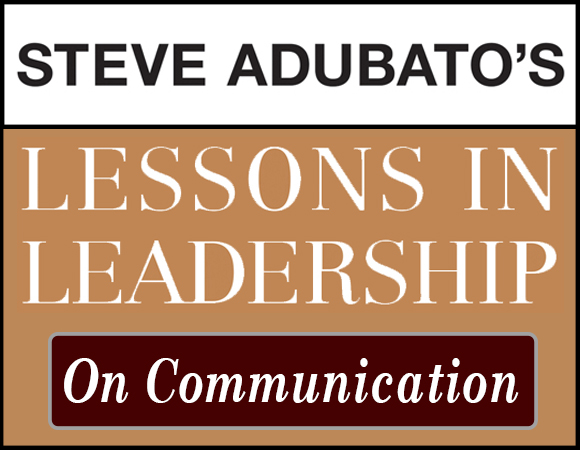by Steve Adubato, PhD
I was recently conducting a sales presentation skills seminar for a client in preparation for an upcoming meeting. It was a long-anticipated meeting with a prospect who my client had wanted to secure for awhile. For weeks leading up to the meeting, my clients were gathering information and organizing an elaborate PowerPoint presentation.
As the date of the meeting neared, a practice session was scheduled in which a team of four would go through the presentation in a role play with the prospective client on the other side of the table.
However, what became immediately clear was after gathering all this information and preparing a considerable number of PowerPoint slides, the following critical communication questions still needed to be addressed:
- Who would be the lead facilitator of the presentation? Who would actually kick off the meeting on their end? Who would be the "quarterback" handing off the "presentation ball" and taking it back at the appropriate time? Who would get the presentation back on track if a fellow presenter was off on a tangent? If the prospective client was pressing a particular issue, and no one on the team seemed to have a credible response, who would take the lead in dealing with it? Like many who have to communicate in similar situations, these presenters hadn't really thought of any of these questions.
- Who actually would lead the meeting and why? What skills were necessary to facilitate under pressure? The biggest communication lesson that I took away is that this situation is more common than we realize. In fact, it's the norm in most organizations that need to communicate and present in a group format. It's much easier to gather information and put it all into a PowerPoint presentation than it is to ask and answer such difficult and sometimes sensitive questions about who will lead and who will follow on a particular team. These questions involve egos, personalities, turf and organizational rank. However, when professionals do work through these challenging questions and agree on who is going to play what role in such important business meetings, their potential for success is much greater.
- What part of the presentation will each team member take on? Even though communication responsibilities need to be identified, great presentation teams allow for enough flexibility so that each team member can jump in and contribute when they feel it is appropriate. For example, if Jane is presenting and Jim feels he has a point to add, he can simply say; "Jane, excuse me for interrupting but there is something I know Mr. Smith is particularly interested in. Could you please elaborate on the XYZ initiative that we started and how it will directly benefit Mr. Smith's company?" Jane has to be confident that Jim is jumping in only to be helpful to her and the team--not to make her look bad. Too often people don't jump in for fear that they will "step on each other's presentation." Ridiculous. If each team member truly feels that they are part of a unified effort, then there has to be a degree of trust that the only reason a team member would jump in is to be more responsive to the prospective client's needs.
Bottom line, before you go into your next group presentation, take the time to sit down and work through the above-mentioned questions. Agree upon a communication game plan beforehand instead of hoping that things will work out when the time comes to stand (or sit) and deliver a powerful and persuasive presentation to a prospective client with whom you hope to do business in the future.
